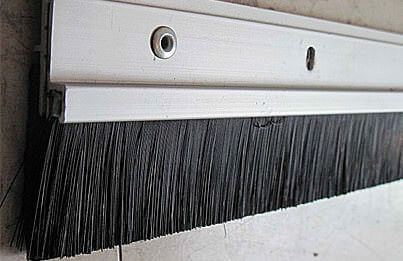

Use a damp, soapy cloth to wipe down the edges of the glass where the seal was and remove any mineral deposits and mildew from the glass. This obviously depends on the type of seals installed but they aren’t usually glued held in place with fasteners. Just grab onto the seal and pull it outwards off of the glass door.

Once they have become brittle, they’re usually quite easy to remove, unless there are mineral deposits holding them in place. To start with, you need to remove the old seals from the door.
#Door sweep install full
If you have a standard “off the shelf” shower then you may be able to get a full replacement seal kit which will already be cut to size. Most glass showers are custom built to fit the available space, so seal strips are sold in individual lengths which can be cut to accommodate your shower. Replacement drip seal strip for the bottom of your door.Replacement lip or bumper seal strip, for one or both sides of your door.If your shower head is still in good condition but some of the holes have become blocked, try effortlessly cleaning out your blocked shower head. Most shower doors have two different types of seals on them, one called a lip or bumper seal, which is installed on the vertical edges and seals against the other glass panels or walls of the shower, and a second drip seal which is installed along the bottom edge of the door and directs the water running down the door onto the shower floor and seals between the door and the floor of the shower. This is quite a cheap and easy problem to fix and shouldn’t take you more than half an hour if you’ve got the right replacement seal strips. You may even just want to replace your seals because they’re looking old or are covered in mildew, which can be difficult to clean off. The seal plastic slowly becomes discoloured and brittle and doesn’t seal as well as it used to. You’ll probably need to replace your shower door seals every few years to prevent puddles of water forming on your bathroom floor.


 0 kommentar(er)
0 kommentar(er)
